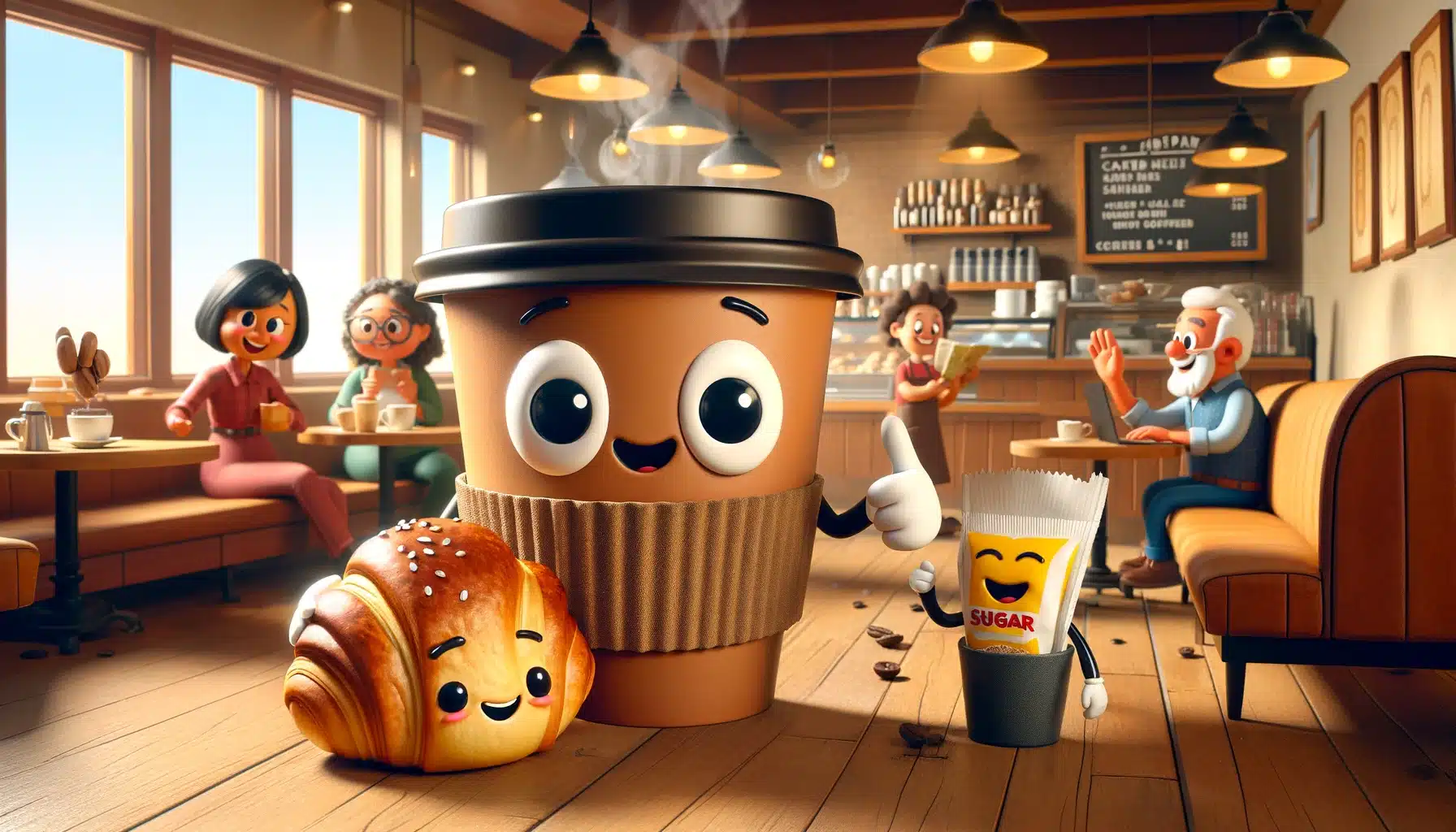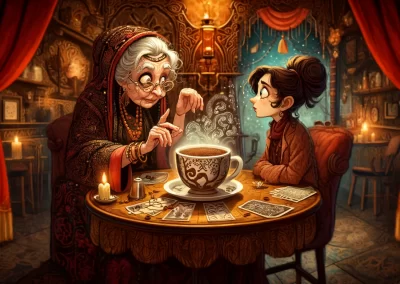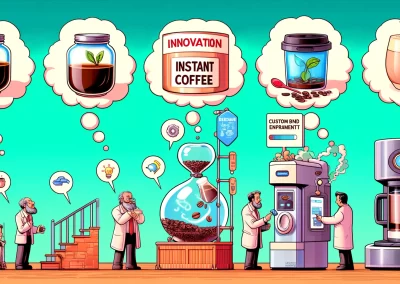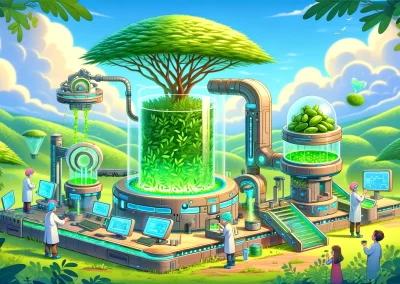Cup of Joe: Unveiling the Quirky Nickname for Your Favorite Brew: The phrase “cup of joe” has nestled itself warmly into the daily vocabulary of countless individuals as they start their day or seek an afternoon pick-me-up with their beloved beverage, coffee. While some terms fade away quietly into the annals of history, this quirky moniker for coffee holds a steadfast place in modern language. But where did this friendly, familiar term originate, and why is coffee referred to so affectionately as a ‘cup of joe’?

Many theories attempt to explain the origin of this endearing term. One popular story links it to Josephus Daniels, a former U.S. Secretary of the Navy, who in 1914 banned alcohol on navy ships, sparking increased coffee consumption among sailors. Another explanation hinges on linguistic simplicity, suggesting that ‘joe’ could be a shortening of ‘jamoke,’ a blend of the words ‘Java’ and ‘mocha,’ which are both associated with coffee. There’s also the notion that ‘joe’ could be referencing the average man, inferring coffee as the common man’s drink.
Each theory brings its flavor to the table in trying to decode the etymology of “cup of joe”. Delving into the past to uncover the roots of our language enriches our appreciation for every sip of coffee. As they unwind with their drink, enthusiasts and curious minds alike can reflect on how this simple term reflects coffee’s cultural prominence as a universally embraced and enjoyed potion.
The Origin Stories of ‘Cup of Joe’
https://www.youtube.com/watch?v=vnQbsbO5PYk&embed=true
The nickname ‘Cup of Joe’ has multiple origin stories, each with a unique historical context and connection to cultural lingo. Here, we explore the fascinating historical theories and the evolution of popular coffee nicknames.
Historical Theories
One prevailing theory involves Josephus Daniels, the Secretary of the Navy during World War I. Under his command, the U.S. Navy banned alcohol on ships, leading sailors to turn to coffee as their primary beverage. This increase in coffee consumption among sailors might have given rise to the epithet ‘Cup of Joe’.
Another theory suggests the term ‘Joe’ could have originated from the words ‘jamoke’, a portmanteau of ‘java‘ and ‘mocha‘, which were popular coffee varieties. This nickname potentially became simplified to ‘joe’ over time as a casual term for coffee.
Popular Coffee Nicknames
Besides ‘Cup of Joe’, coffee has had several nicknames throughout history.
- Jamoke: Derived from a blend of ‘Java‘ and ‘Mocha‘.
- Java: An island of Indonesia once renowned for its coffee.
- Mocha: A port city in Yemen, historically a center of coffee trade.
Coffee’s journey through different cultures enriched its lexicon, turning it from a commodity into a term of endearment, like calling it a ‘Cup of Joe’. It captures the essence of its pervasive presence in daily life.
Cultural Impact of Coffee
The infusion of coffee into daily life extends far beyond a mere morning ritual. It is a cultural mainstay that has shaped social dynamics and influenced various media, from art to advertising.
Coffee in Social Settings
Coffee has long been a pivotal fixture in social interactions. The Coffee shops have emerged as quintessential meeting spots, where people gather for both casual rendezvous and professional engagements. In many societies, especially in American culture, these venues serve as hubs of socialization, offering a space where the average Joe can engage in conversation over a hot beverage. They often foster a sense of community and have been instrumental in shaping the cultural significance of coffee as a social lubricant.
The Role of Coffee in Advertising
Coffee’s prevalence is significantly marked in the realm of advertising. The beverage has been a central theme in campaigns, with iconic references like Joe Martinson‘s Martinson Coffee and slogans claiming it’s “so good it’s like a cup of Joe.” Moreover, television shows like Mad Men have showcased coffee’s role in advertising’s golden age, encapsulating its importance in American society. Even artists such as Andy Warhol have recognized coffee’s prominence, leading to coffee being featured in pop art and further cementing its place in American cultural identity.
Linguistics Behind Coffee Terms
In the world of coffee, the terms we use are steeped in history and peppered with unique jargon. These linguistic choices reflect both the globalization of coffee culture and the specialized knowledge of coffee aficionados.
Jargon and Idioms
Coffee terminology is rich with idioms and jargon. Baristas and coffee enthusiasts often refer to an espresso with steamed milk as a latte, while a cappuccino includes a frothier mixture of milk. A regular in coffee parlance stands for a coffee with cream and sugar in North America, but the term could simply mean a black coffee in other regions. Black coffee, straightforward as it is, evokes the strong, unadulterated essence of the beverage itself.
- Mocha: Traditionally a mix of chocolate and coffee, the term mocha originally referred to a variety of coffee bean from the port town of Mocha, Yemen.
- Mud/Jitter Juice/Jet Fuel: In more casual or humorous contexts, coffee might be called “mud” for its thick appearance, “jitter juice” for its energizing effects, or “jet fuel” indicating a need for intense stimulation.
Etymology of Coffee Language
The etymology of coffee terms often traces back to the origins of coffee consumption and the linguistic amalgamation through its global journey.
- Cappuccino: Derived from the Capuchin friars, noting the color resemblance to their robes.
- Latte: Comes from the Italian “caffè latte,” which literally means “milk coffee.”
Languages and cultures have influenced coffee-related words, shaping them into the familiar terms used around the world today. For example, the phrase “cup of joe” is believed to originate from an American source, possibly as a nod to Josephus Daniels or a variation of other terms like “jamoke,” a blend of “Java” and “mocha.” Each term tells a story, linking the speaker to centuries of coffee culture with just a simple order.
Coffee Varieties and Innovations
Coffee enthusiasts have a plethora of options when it comes to their beloved brew, with varieties ranging from the classic Arabica to the robust Robusta, each offering distinct flavors and characteristics. Arabica coffee, known for its smooth and aromatic qualities, often comes from notable coffee-growing regions in Latin America.
In contrast, the full-bodied Mocha Java, representing one of the oldest coffee blends, is a combination of Arabian Yemen beans, known for their winey taste, and Indonesian beans from Southeast Asia which adds to its richness. This blend stands as an example of early coffee innovation, built on the diverse coffee profiles of different regions.
Table 1: Popular Coffee Varieties
| Variety | Region | Profile |
|---|---|---|
| Arabica | Latin America | Smooth, aromatic |
| Robusta | Africa, Vietnam | Strong, bitter |
| Mocha Java | Yemen/Indonesia | Rich, bold |
Modern coffee innovation continues to evolve with trends like cold brew, a method that steeps coffee grounds in cold water for an extended period, resulting in a smoother and less acidic beverage. It’s often paired with milk or served black to showcase its unique taste.
The tradition of Turkish coffee, finely ground and often brewed in a special pot called a cezve, remains intact, offering a testament to the enduring legacy of historical preparation methods.
Instant coffee has also seen advancements, with the G. Washington Coffee Company historically revolutionizing the market in the early 20th century, providing a quick, convenient option for coffee lovers.
As coffee culture flourishes, the innovations in how it can be experienced—from bean to brew—continue to captivate and satisfy drinkers around the world.
Regulations and Coffee Popularity

This section delves into how regulatory measures, particularly by the U.S. Navy, and periods such as Prohibition, affected the popularity and consumption of coffee, giving rise to the term ‘cup of joe’.
Naval Influence on Coffee Consumption
The U.S. Navy has a storied history with coffee, significantly influencing its consumption. Most notably, Josephus “Joe” Daniels, the Secretary of the Navy under President Woodrow Wilson, issued General Order 99. This 1914 mandate effectively banned alcohol on U.S. Navy ships. As a result, sailors turned to coffee as their primary beverage, causing a spike in its popularity among seafarers during World War I and persisting into World War II. The increased demand for coffee on naval vessels is directly tied to the pervasive use of the term ‘cup of joe’.
Prohibition Effects on Coffee Serve
The Prohibition era in the United States, which lasted from 1920 to 1933, led to a nationwide ban on the manufacture, sale, and transportation of alcohol. As a consequence, Americans sought alternatives to alcoholic beverages, and coffee houses gained popularity. Coffee quickly became the go-to social drink, filling the void left by the absence of alcohol. The dissent and anger towards the Prohibition led people to congregate in coffee establishments, elevating the status of coffee as a social lubricant and potentially contributing to the moniker ‘cup of joe’.
Frequently Asked Questions
This section tackles some common curiosities about coffee’s colloquial nickname and its interesting connections within the coffee culture.
What’s the origin of the term ‘cup of joe’ for coffee?
The term ‘cup of joe’ for coffee has several theories behind its origin. One popular explanation suggests that ‘Joe’ might derive from the simplification of ‘jamoke’, a blend of ‘java’ and ‘mocha’.
How did Joe Martinson influence the coffee industry?
Joe Martinson, the founder of Martinson Coffee, had a significant impact on the industry. His distinct roasting style and quality beans helped shape the reputation of New York coffee, coining the phrase “a cup of Joe” based on his name and his strong influence.
What varieties of coffee can be found on a typical ‘Cup of Joe’ menu?
A typical ‘Cup of Joe’ menu might feature a range of classic coffee preparations such as drip brewed, espresso, Americano, cappuccino, and latte, appealing to various tastes and preferences.
In slang, what does a ‘cup of coffee’ represent?
In slang, a ‘cup of coffee’ often refers to a short duration, especially in the context of sports, where a player might be said to have had just a ‘cup of coffee’ in the major leagues, indicating a brief stint.
What’s the connection between ‘cup of java’ and coffee?
The term ‘cup of java’ is a nod to the Indonesian island of Java, historically one of the largest producers of coffee in the world, and the term subsequently became synonymous with coffee itself.
What is the story behind the name ‘Joe and the Juice’?
The name ‘Joe and the Juice’ is a creative take on a coffee and juice bar, blending the familiar nickname for coffee, ‘Joe’, with the fresh appeal of ‘juice’, highlighting their dual focus on energizing beverages.









